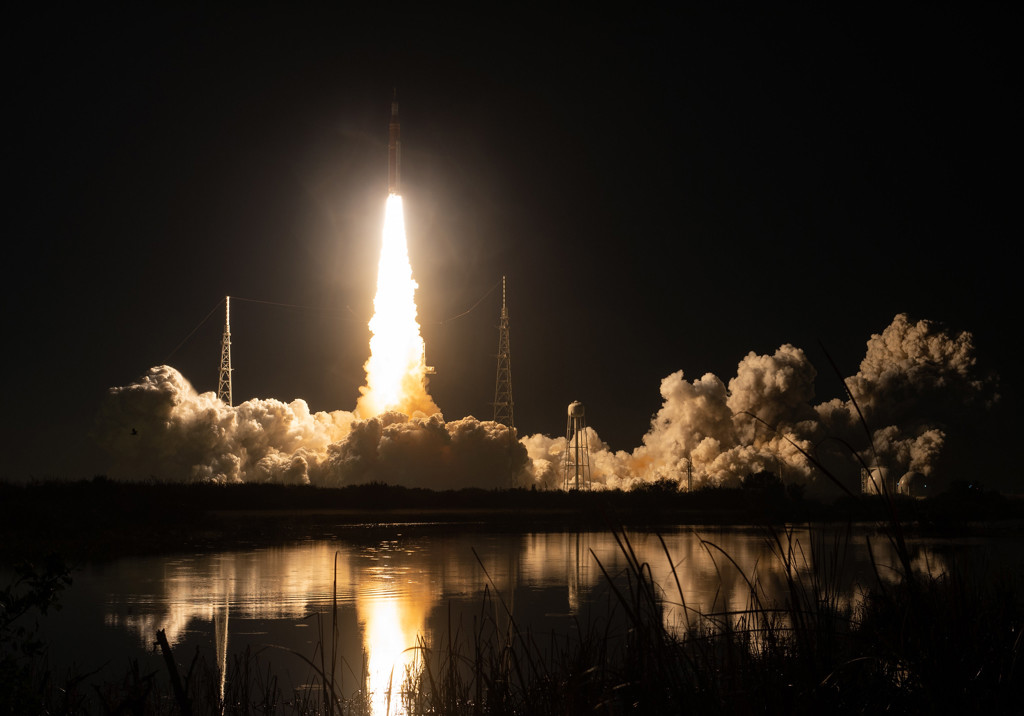One giant leap for optics
One giant leap for optics
Sammi Bradley, Digital Communications Coordinator, Optica
Artemis I is finally in flight, carrying with it photonics technology to solve mysteries of water on the moon. The launch of the Artemis I rocket marks the beginning of the Artemis Moon Mission, which will employ optics to broaden our ability to communicate from space.
In 2008, optical sensing revealed that the moon holds great water deposits. To continue the search— Artemis I will use state-of-the-art photonics technology in the form of a quantum cascade laser (QCL), which is smaller than a coin. The laser will help detect water on the moon and distinguish between water and water-like compounds, a critical step in a plan to establish a permanent presence on the moon.

Artemis Taking Off
Credit: (NASA/Keegan Barber)
Optical communications technology will play a role in future Artemis missions by bolstering our ability to communicate between space and Earth. Artemis II will feature the Orion Artemis II Optical Communications System (O2O). The light from the O2O lasers will be captured by systems on Earth, converted into electrical data, and forwarded to the mission control center for research, lighting the way for exploration. O2O’s cutting-edge technology will provide astronauts with more data than ever before, allowing NASA to use information from images, video and experiments to explore not only the moon but Mars and the universe beyond too. It’ll even provide us with 4K ultra-high definition video, sharing a vivid view from space!

Optica’s corporate members are also playing a role in this new generation of lunar research. NASA has selected Optica Corporate Member Nokia to build the first-ever cellular network on the moon, aiming to establish a sustainable presence by 2030. The network will provide critical communication capabilities for the Artemis program, including vital command functions, remote control of lunar rovers, real-time navigation and more.
Optical technology is extraordinarily important in the quest to unfold the universe by extending communications to the moon for near-Earth and deep-space missions. The data collected by Artemis I will support the future of NASA’s research, and the ultimate goal to establish a sustained human presence on the moon.
After the successful launch of Artemis I, the next mission, Artemis II, is currently set to launch in May 2024 to land the first astronauts on the moon since 1972.
Can’t get enough of NASA’s new initiatives? Scott Acton from Ball Aerospace, whose team phased the James Webb Space Telescope, joined the 2022 Optica Imaging Meeting and Frontiers in Optics + Laser Science (FiO) to share his adventure around the world promoting Webb.
Read more in our blog posts from Imaging and FiO.
